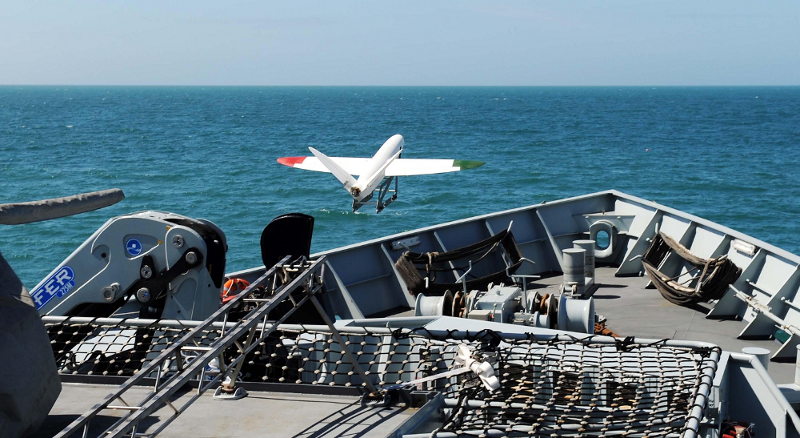
Charles R. Goulding and Ryan Donley consider two navies’ applications of additive manufacturing.
The United States and United Kingdom’s navies have long been experimenting with 3D printing to a high degree of success with numerous naval fleets containing ships outfitted with 3D printed parts. In addition, ships are going out to sea with 3D printers on board, completely shifting the logistical challenges faced by large ships that may not dock in ports for weeks at a time. Logistics issues are the same across every navy branch in the world and in January 2021, two world naval powers, the United Kingdom and the United States, entered an agreement to merge strike forces in an attempt to further strengthen overall naval capabilities.

The British Royal Navy, similar to its US counterpart, has long been experimenting with 3D printing aboard their ships. Engineers at the University of Southampton engineered and built an unmanned aerial vehicle (UAV) and the Royal Navy assisted in the launch aboard the HMS Mersey in July of 2015.

The US followed as in late July of 2015 aboard the USS Essex, a 3D printed mini quadcopter was designed and developed on board and flown around the hangar deck.
Both navies are well versed in additive manufacturing practices and have been experimenting with various methodologies for several years. However, it has only been in recent years that both the US and UK navies have successfully developed and integrated 3D metal parts for their fleets. The US currently has a prototype drain strainer orifice assembly installed on USS Harry S. Truman and undergoing testing and evaluation trials. According to NAVSEA chief engineer and deputy commander, Rear Admiral Lorin Selby:
“This install marks a significant advancement in the Navy’s ability to make parts on demand and combine NAVSEA’s strategic goal of on-time delivery of ships and submarines while maintaining a culture of affordability.”

The US Navy is also set to benefit from a recently-announced Collaborative Research and Development Agreement (CRADA) between Xerox and the Naval Postgraduate School (NPS) focused on metal 3D printing.
The Royal Navy has yet to brief much of their 3D printing plans aboard their craft. However, it is known that there are 3D printers already aboard numerous ships and submarines. Worth mentioning also was the Royal Navy’s plans to develop a submarine with a body akin to a manta ray and a hull that is 3D printed from acrylics. The proposed submarine project would present a unique technological combination that would change the naval warfare landscape.
Companies integrating 3D printing in the design and integration of watercraft parts and similar activities may be eligible for the Research and Development (R&D) Tax Credit.
The Research & Development Tax Credit
Whether it’s used for creating and testing prototypes or for final production, 3D printing is a great indicator that R&D Credit eligible activities are taking place. Companies implementing this technology at any point should consider taking advantage of R&D Tax Credits.
Enacted in 1981, the now permanent Federal Research and Development Tax Credit allows a credit that typically ranges from 4%-7% of eligible spending for new and improved products and processes. Qualified research must meet the following four criteria:
- Must be technological in nature
- Must be a component of the taxpayer’s business
- Must represent R&D in the experimental sense and generally includes all such costs related to the development or improvement of a product or process
- Must eliminate uncertainty through a process of experimentation that considers one or more alternatives
Eligible costs include US employee wages, cost of supplies consumed in the R&D process, cost of pre-production testing, US contract research expenses, and certain costs associated with developing a patent.
On December 18, 2015, President Obama signed the PATH Act, making the R&D Tax Credit permanent. Beginning in 2016, the R&D credit can be used to offset Alternative Minimum tax for companies with revenue below $50MM and, startup businesses can obtain up to $250,000 per year in payroll tax cash rebates.
Conclusion
Both the United States Navy and the British Royal Navy are among the most powerful and technologically advanced in the world. The recent joint task force between the two presents an opportunity for naval logistics and advanced warfare to continually be innovated upon as both navies are well known for their 3D printing and vast technological genius.
